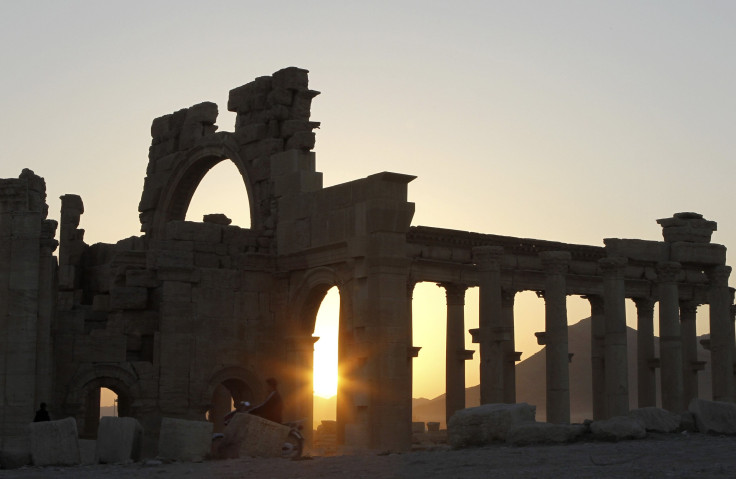Islamic State Antiquities Trade Stretches To Europe, United States

The Islamic State is the richest terrorist organization in the world, largely funded by its oil-smuggling operations. But ISIS is also benefiting from the sale of other valuable assets buried deep beneath its territories – ancient archaeological artifacts.
ISIS’ illicit antiquities trade was been a lucrative source of revenue for the group, aided by a growing black market of willing buyers who allow items as big as statues and as small as cylinder seals to make their way from the ground in Iraq and Syria to auction houses and museums in Asia, Europe and the United States.
The artifacts represent a source of terrorist income that, although less lucrative than oil, kidnapping or extortion, is just as difficult to cut off. Ancient treasures are notoriously hard to track. They are often smuggled over borders with fake paperwork and change hands multiple times, sometimes over the course of decades. Museums and academics around the world do their best to address the problem, but the supply of artifacts is only increasing — and so is demand.
“The fact that ISIS is making millions and millions of dollars off this means that there are people around the world willing to pay for these objects,” said Leila Amineddoleh, a partner at Galluzzo and Amineddoleh LLP law firm who focuses on art and cultural heritage law. “There’s always going to be those people who don’t care where an object came from, they just want it.”
While the problem isn’t unique to the Middle East, the illicit antiquities trade is flourishing as more areas of the world's oldest civilizations fall under conflict and instability. Meanwhile, an increasing number of objects from the region are turning up in the United States. Between 2011 and 2013, U.S. imports of art, collectors’ pieces and antiques from Egypt, Iraq, Lebanon, Syria, and Turkey jumped 86 percent, from $51.1 million to $95.2 million, according to U.S. International Trade Commission data.
Many of those sales are legitimate and legal, but experts suspect that illicit transactions represent a hidden share of the enormous increase. During the same period, for instance, the dollar value of similar items imported from Iraq increased 492.4 percent.
“The fact that there’s been an increase during a time of conflict strongly suggests that much of it is illegal,” Amineddoleh says. “It’s an easy time to mix it in with the good stuff and try to pass it off all at once.”
Thus, the Islamic State, which participates in an array of lucrative criminal activities to keep its revenue flowing, has taken to the trade with gusto.
“[ISIS is] hiring their own people; they’re using a lot of earth-moving equipment -- bulldozers, et cetera,” Amr Al-Azm, an archaeologist at Shawnee State University in Ohio who is a leader of the Syrian Heritage Initiative, said in a recent Foreign Policy report. “What I can tell you is they’re making enough to make it worth their while.”
The SHI, which is run by the American Schools of Oriental Research, has been documenting the cultural damage being done under the Islamic State. The group’s weekly reports outline how dozens of ancient sites are being damaged by looting.
After Islamic State members recover various artifacts, they send them abroad for sales. But with no formal market, researchers are having trouble tracking the activity.
“It isn’t easy at all,” said Michael Danti, a professor at Boston University who is also on the ASOR team. “You follow what is showing up in shops, on online auction sites, and in auction houses.”
But lots of looted items don’t make it to those public forums right away. Danti says he recently spoke with a Syrian living in Europe who was approached by a seller who showed her cell phone photos of antiquities from Syria.
Another issue is knowing where an object comes from. “A lot of unscrupulous dealers fabricate a pedigree for the antiquity that makes it look legal,” Danti says.
This has proven a major problem for reputable museums, many of which have refused to accept any artifacts that come from conflict regions.
Last year, the International Council of Museums published the “Emergency Red List of Syrian Cultural Objects at Risk,” to help collectors, dealers and museums around the world “identify the types of objects that are most susceptible to illicit trafficking and therefore subject to smuggling and illicit trade.”
In September, U.S. Secretary of State John Kerry addressed the problem in a speech at the Metropolitan Museum in New York City, where he pledged the government’s support for a series of projects to help document the destruction.
“Ancient treasures in Iraq and Syria have now become the casualties of continuing warfare and looting,” Kerry said. “And no one group has done more to put our shared cultural heritage in the gunsights than ISIL.”
© Copyright IBTimes 2024. All rights reserved.






















